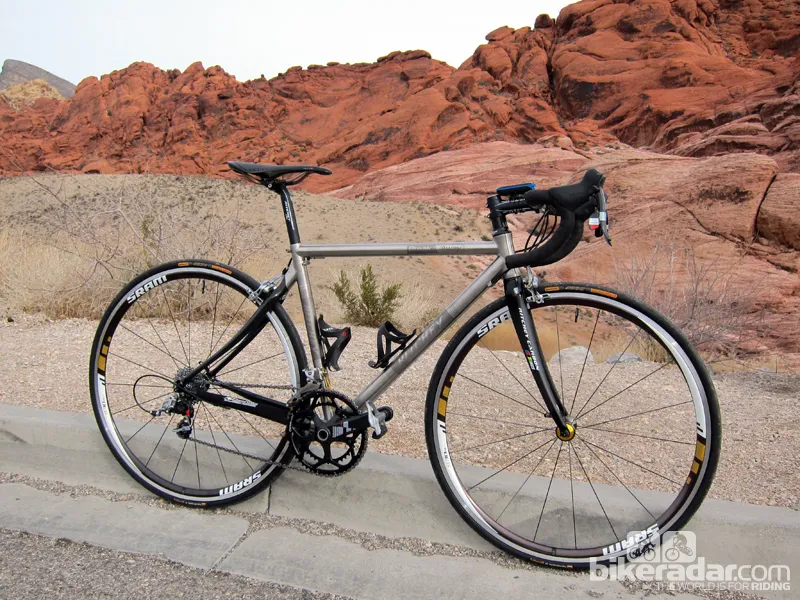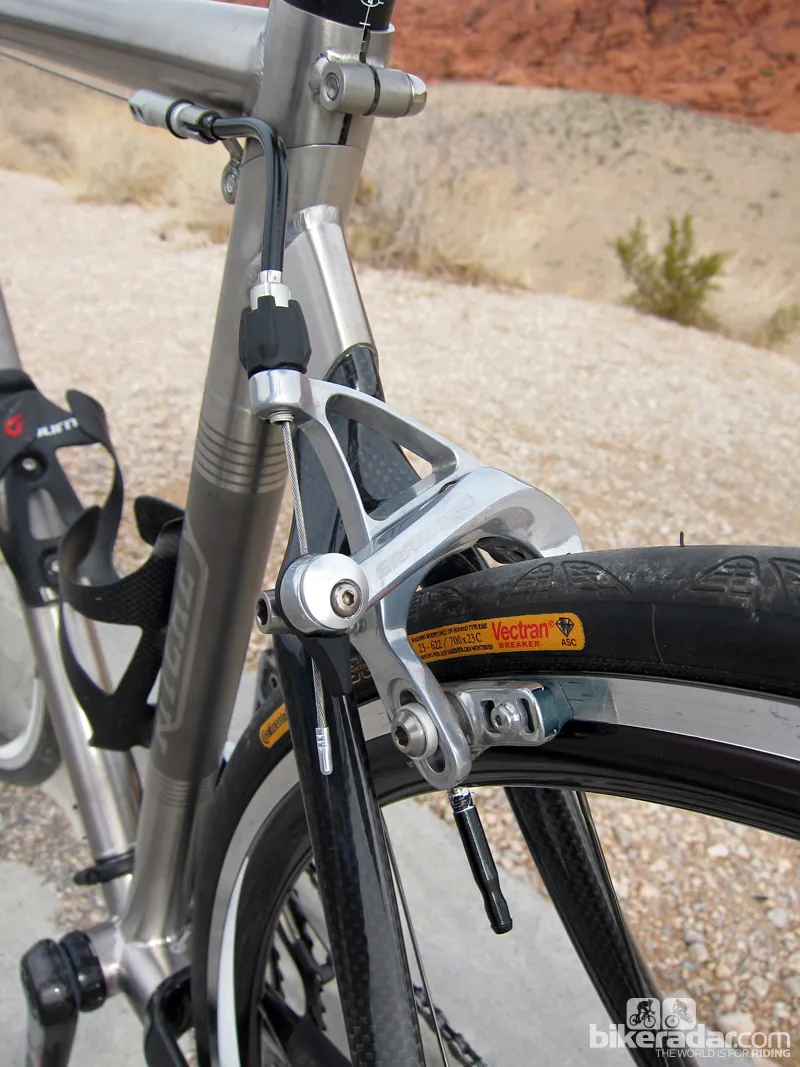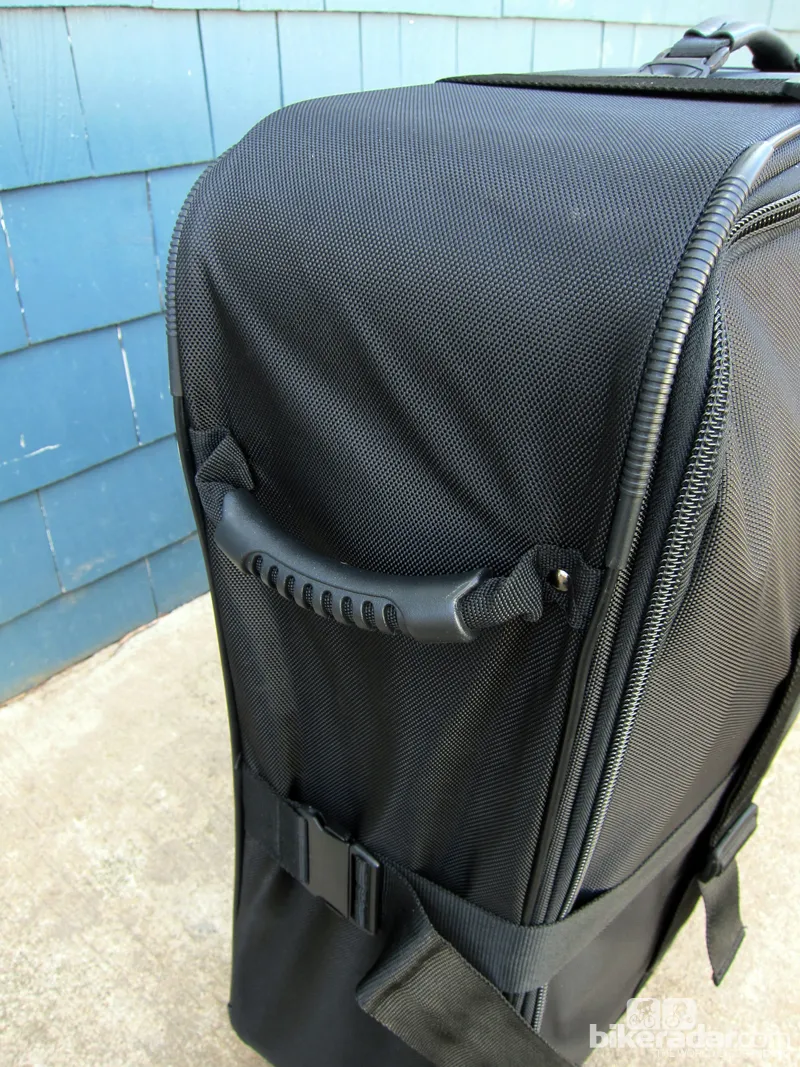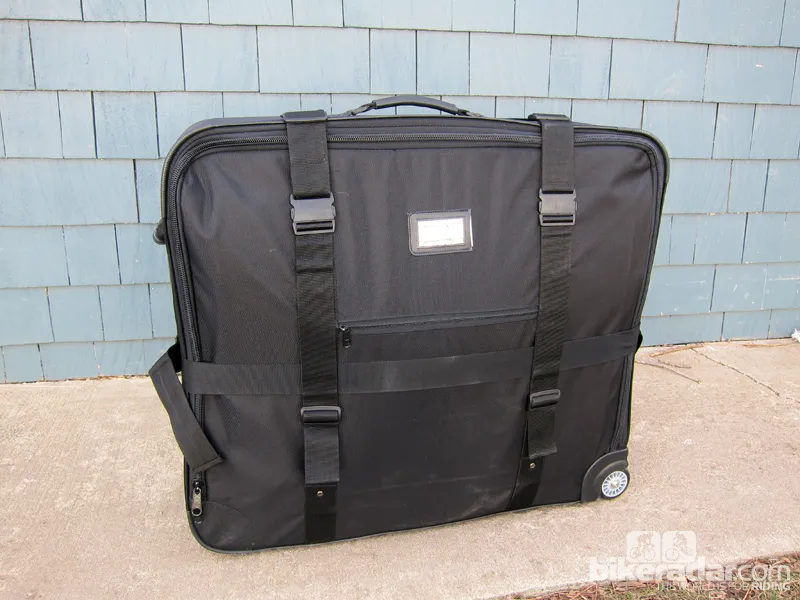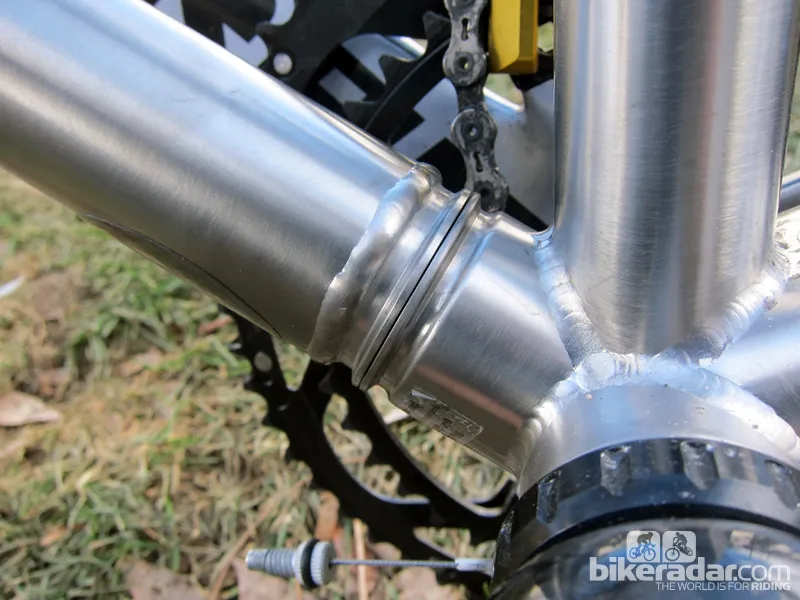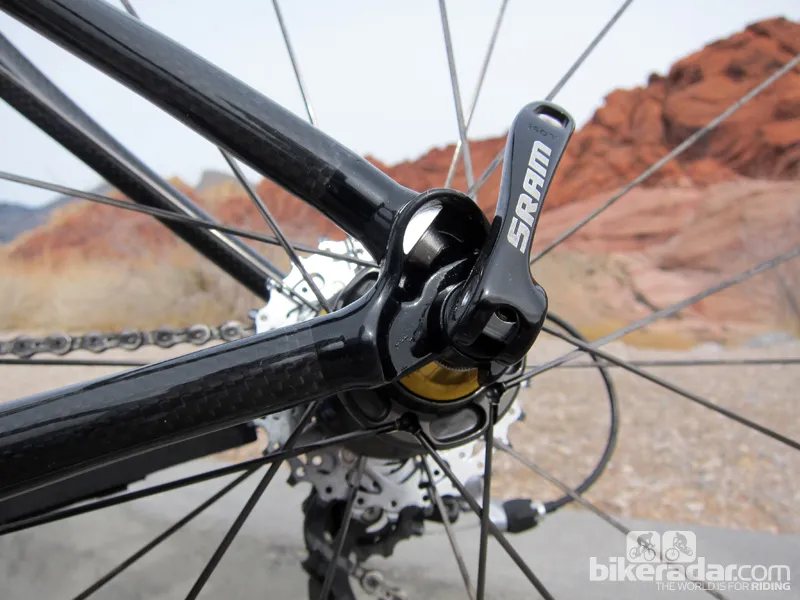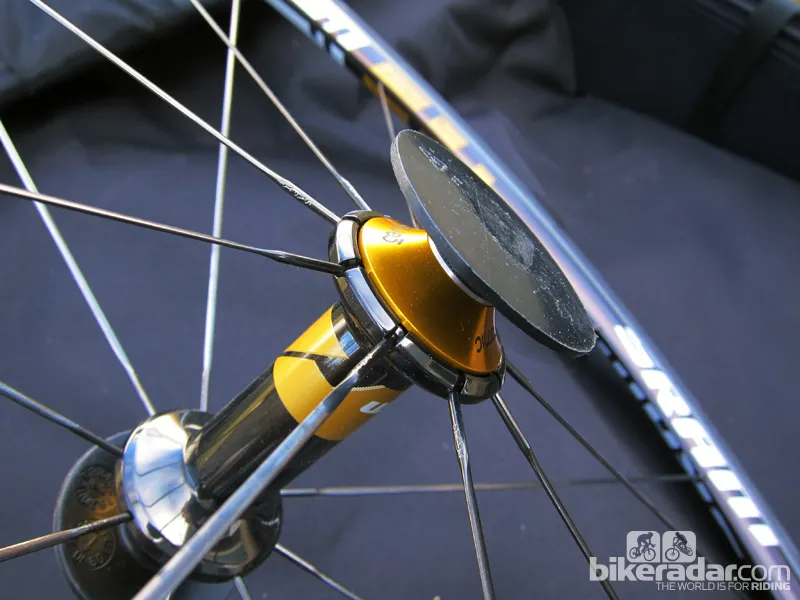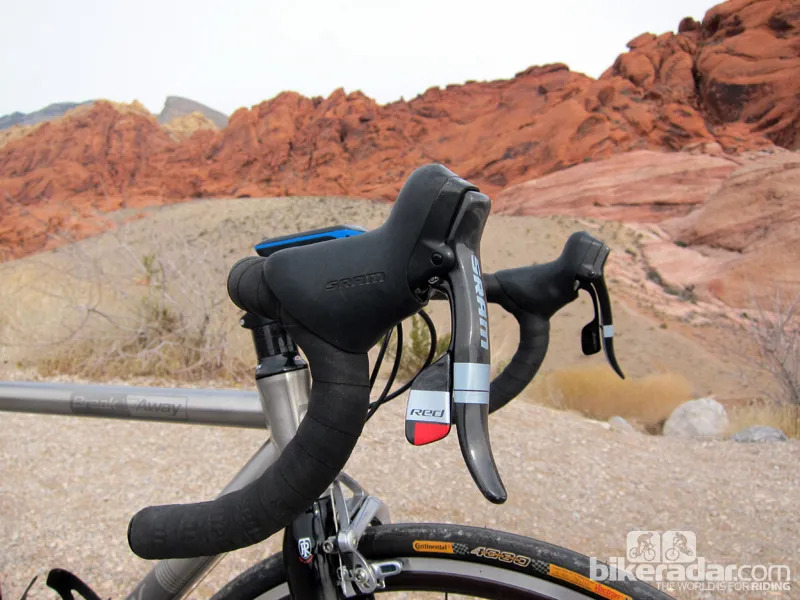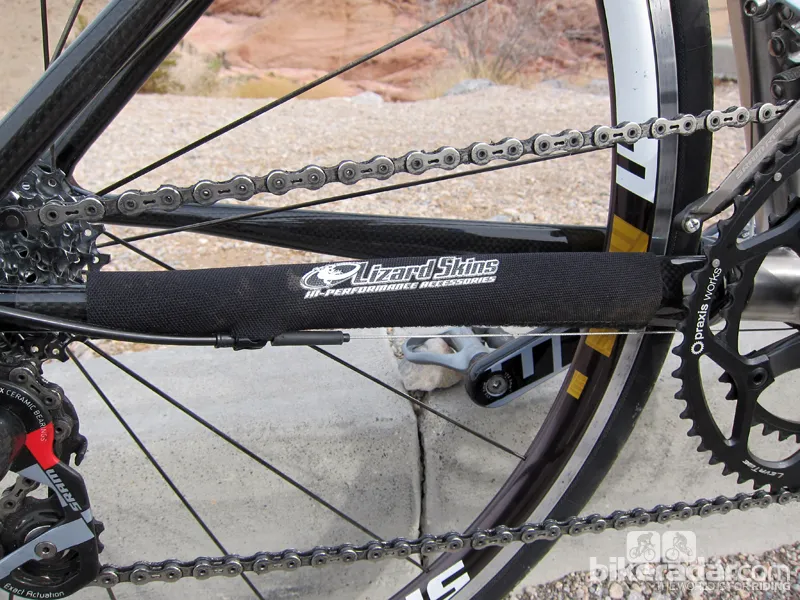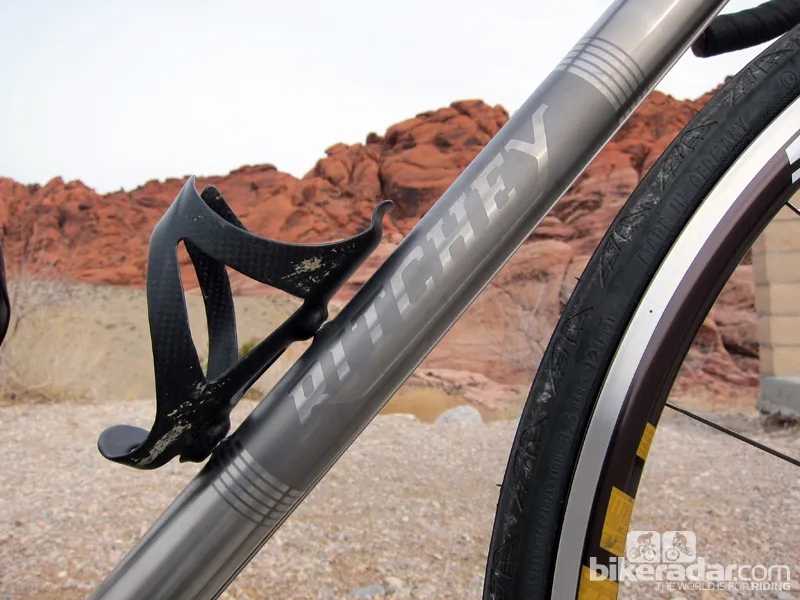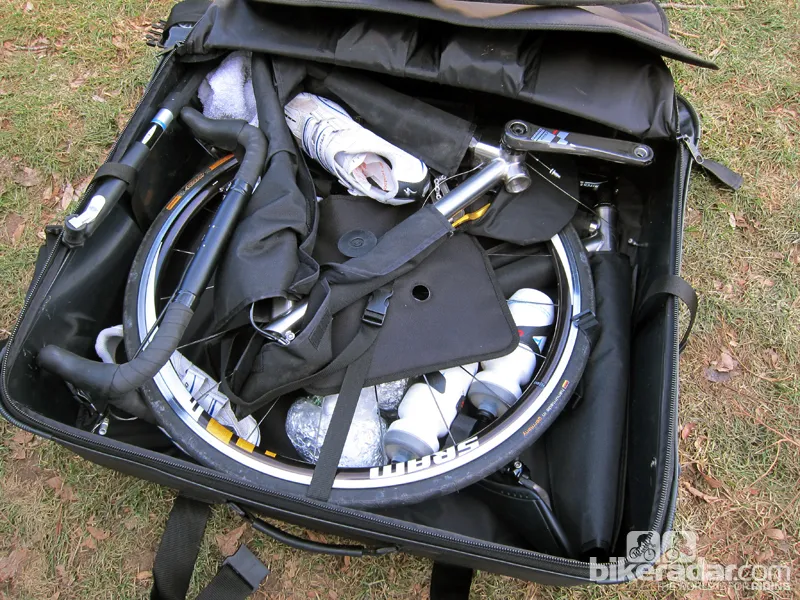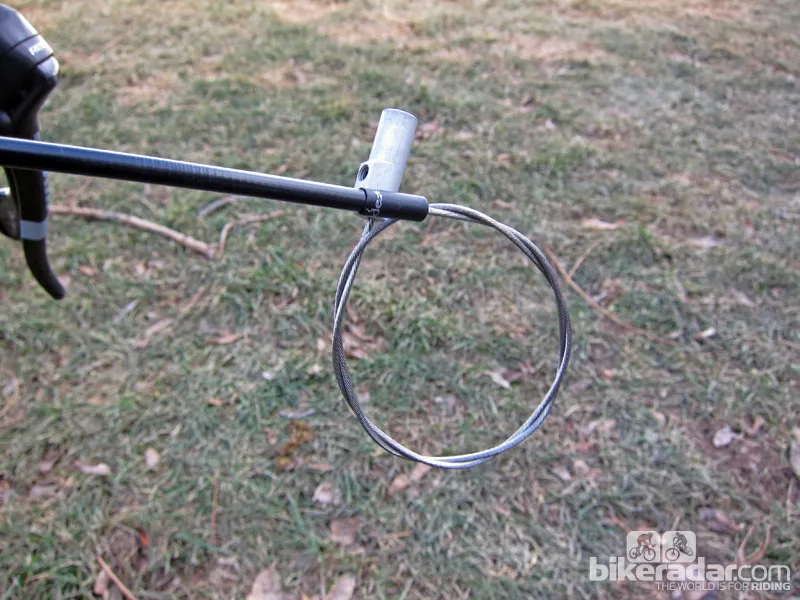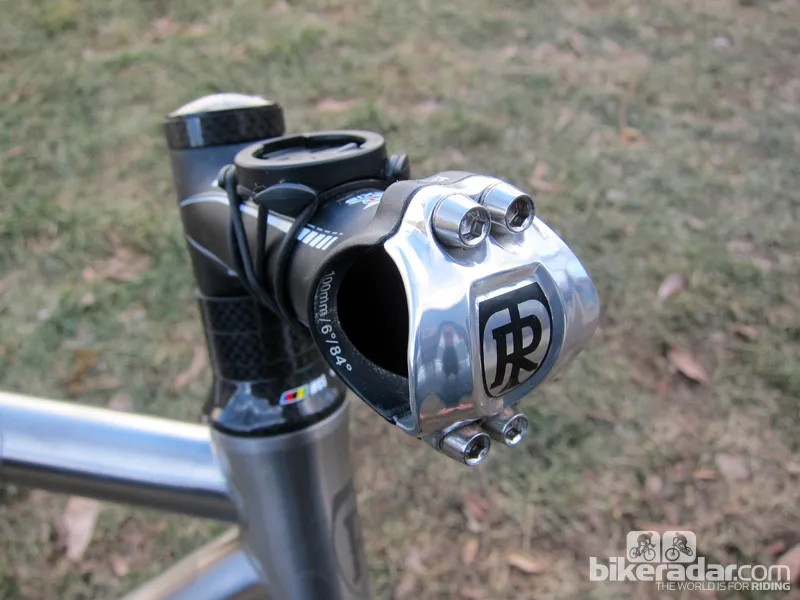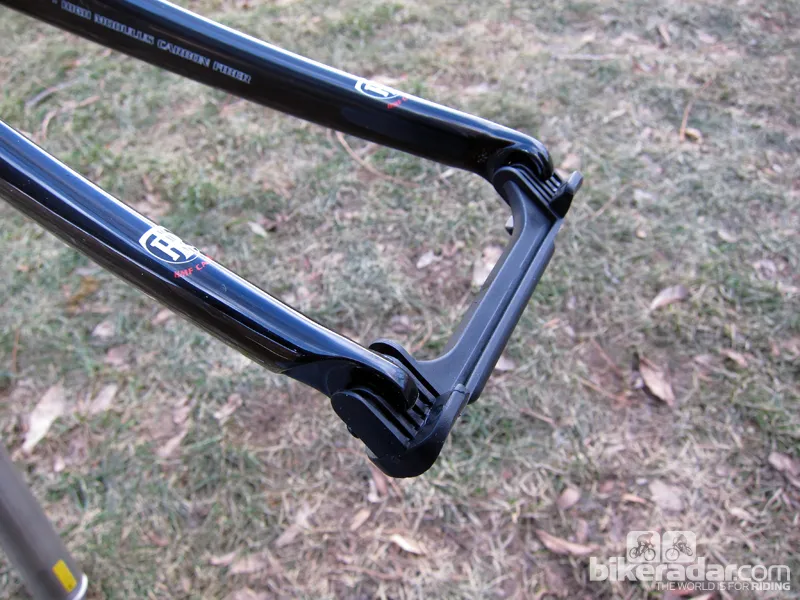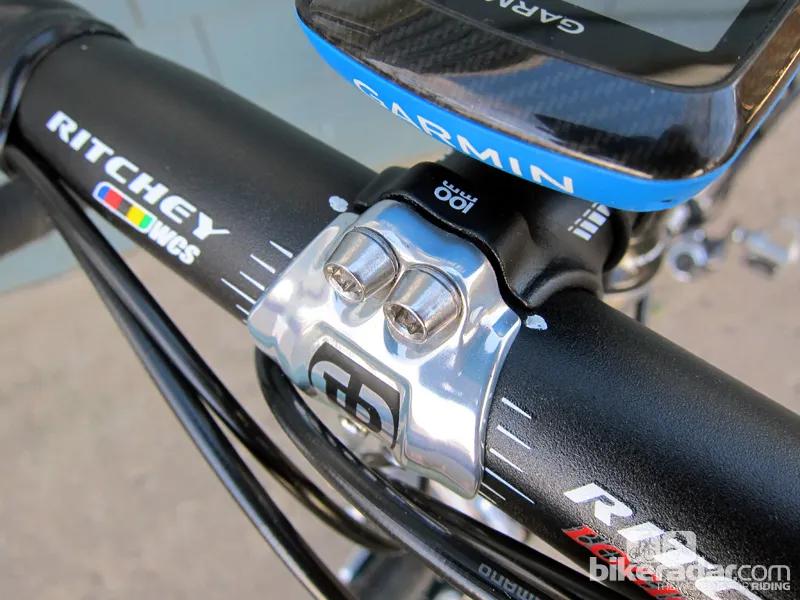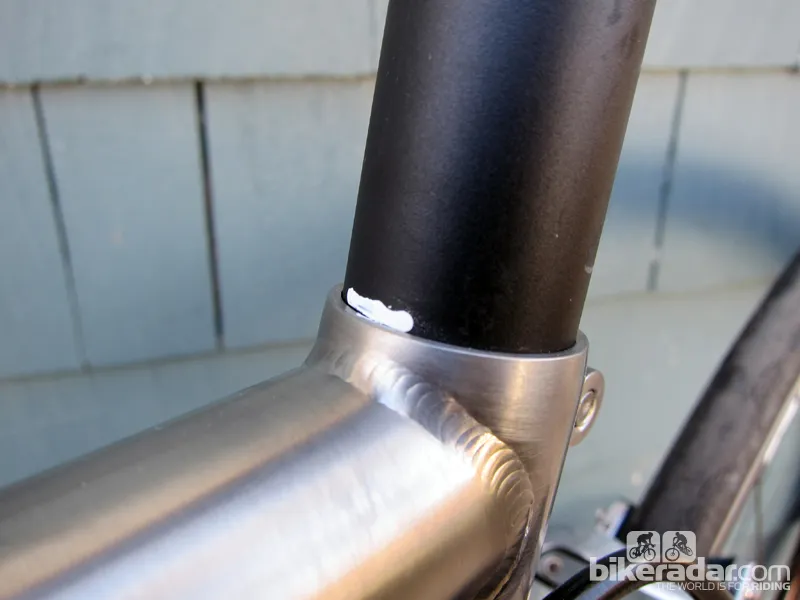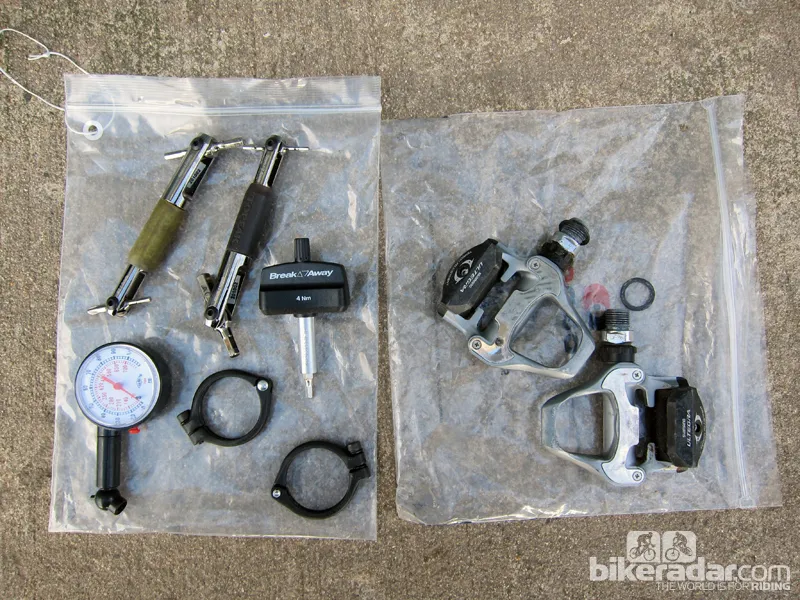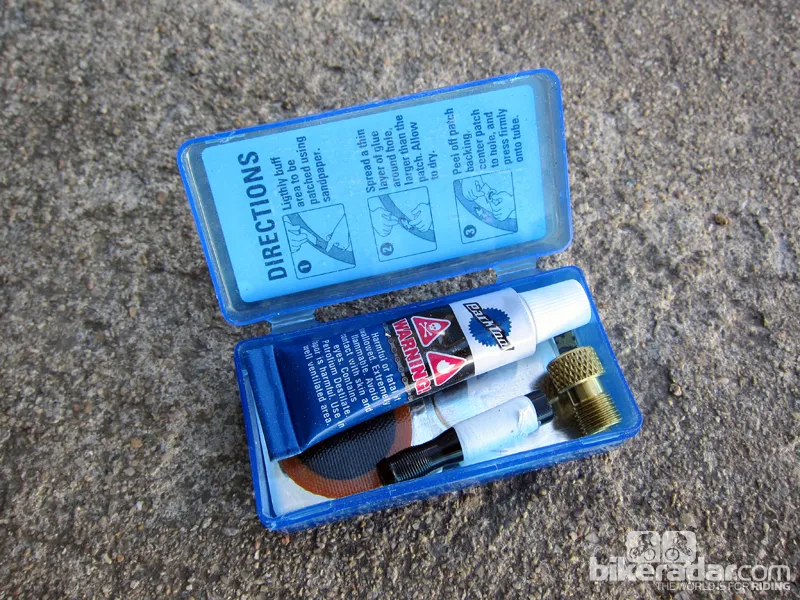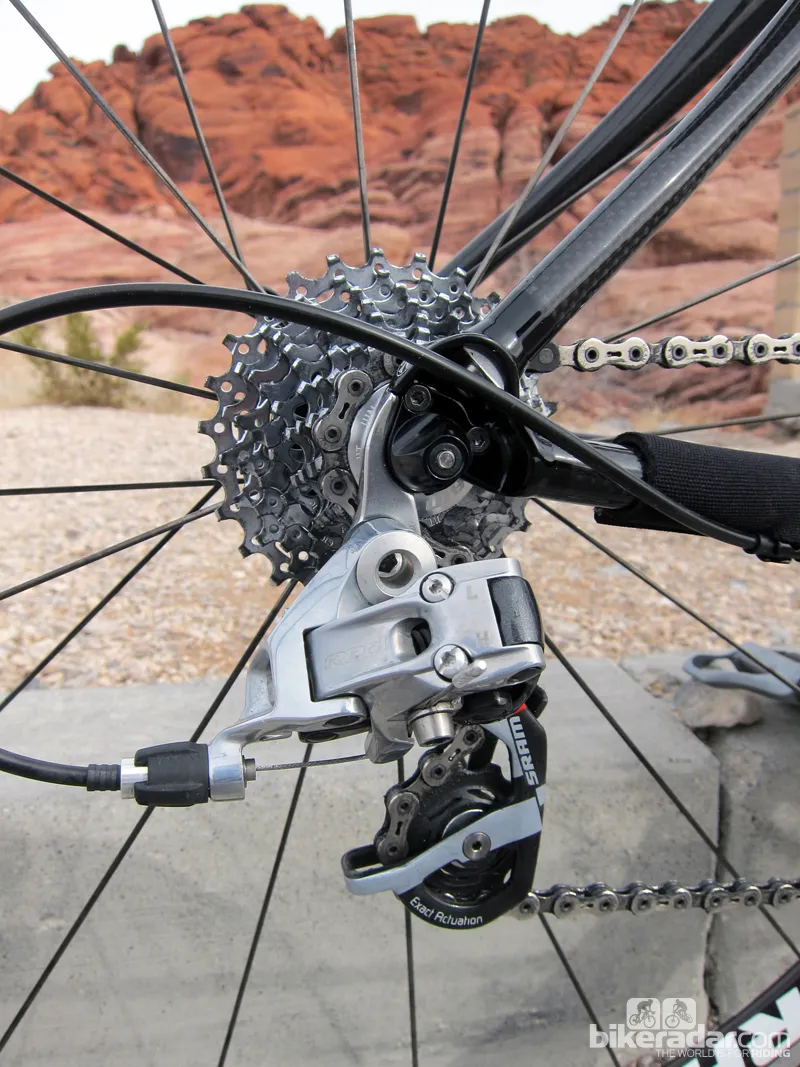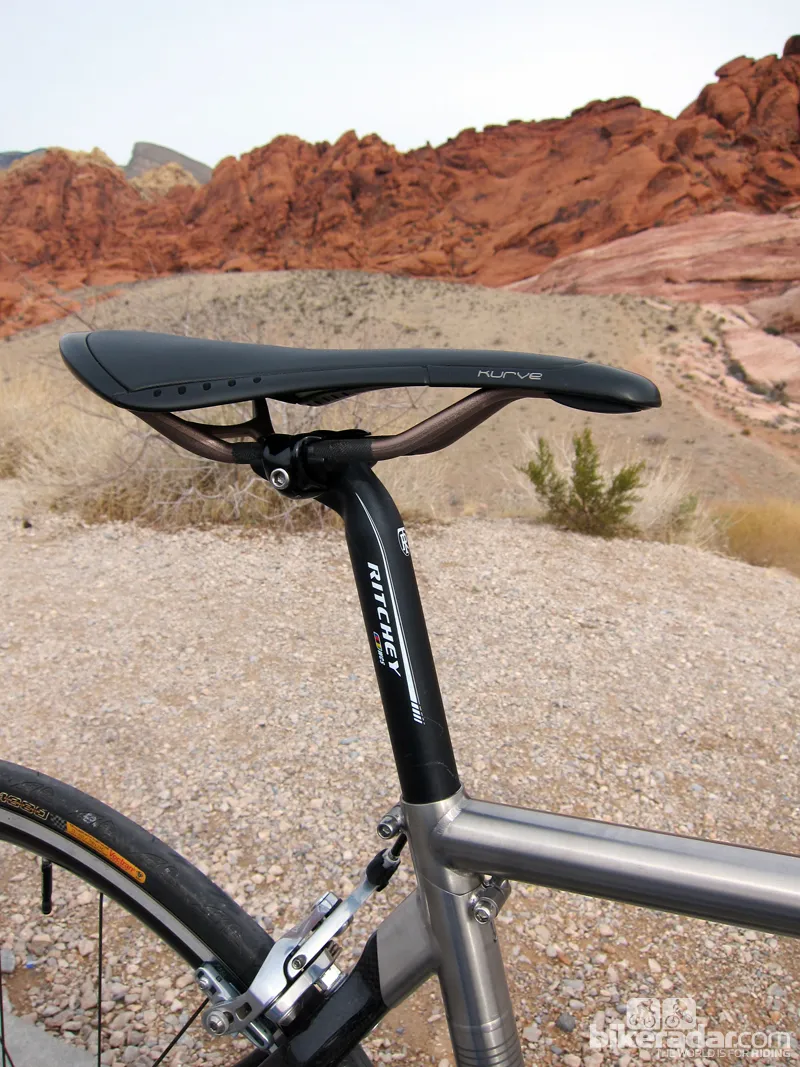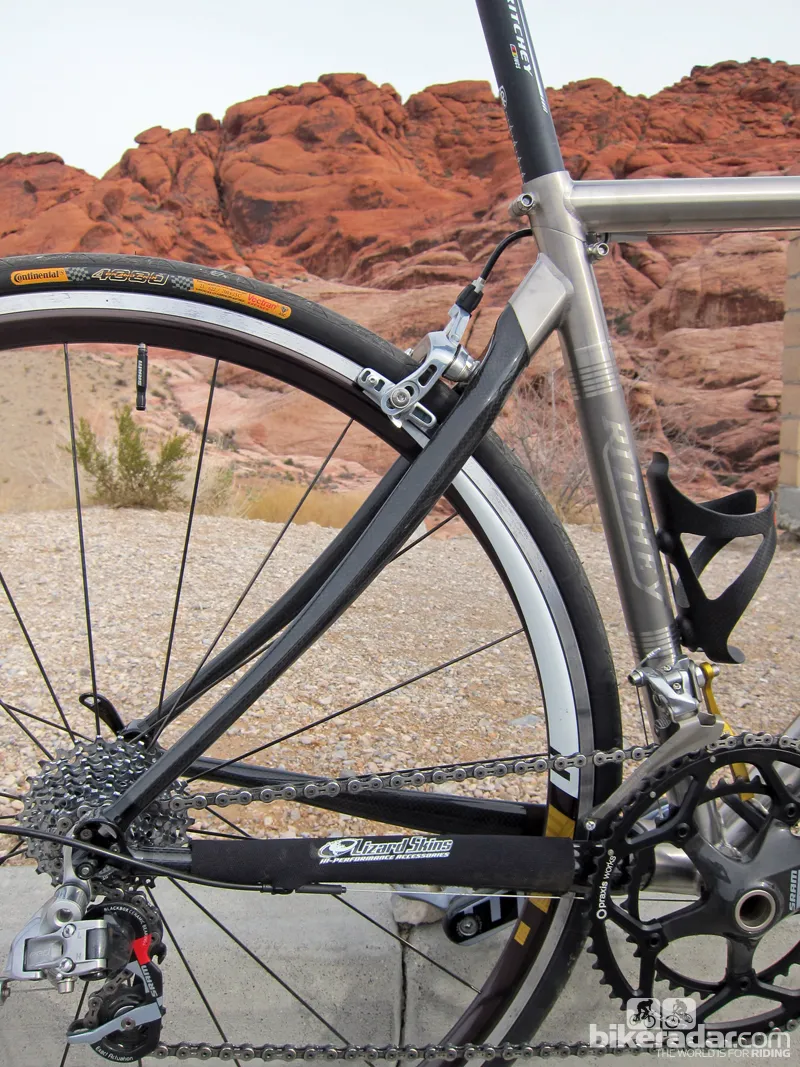Travel bikes are often an exercise in compromise, but the Ritchey Break-Away Road Ti/Carbon is different. It comprises a sleek, high performance titanium and carbon fiber frame that just happens to fit into a conveniently sized case.
We've been traveling with it regularly this spring, and logged nearly a dozen days of riding, on two continents, that we wouldn’t have had otherwise. We haven’t paid a single dollar in baggage fees, either. With its smart build, the Break-Away has been good enough to use as an everyday machine at home, too.
Ride and handling: Smooth and resilient
True to form, the Ritchey Break-Away Road Ti/Carbon delivers a classic titanium ride, with a resilient and springy feel under power and a distinctly smooth quality on rough roads. Despite the carbon rear stays and included all-carbon fork, it's quite a different feel from the all-carbon chassis that dominate the current landscape.
There's noticeable flex in the drivetrain when you really put the power down, and a subsequent delay between effort and output. That's particularly the case on steeper climbs when you've got no choice but to muscle away ruthlessly. There's a similar degree of flex from the rather traditionally proportioned front end when you're sprinting out of the saddle.
In most conditions that extra flex wasn't much of an issue – we generally used the Ritchey for more steady-state rides, not full-blown hill repeats. Likewise, we've certainly piloted bikes that handled more precisely but the Ritchey still felt confidently planted at speeds approaching 75km/h (47mph).
The upside of the softer backbone is additional comfort, which the Ritchey offers in spades. Whereas most carbon bikes stiffen up on especially rough surfaces, such as washboarded dirt roads, the Ritchey eats them up with barely a whimper. It's a feature we especially appreciated while riding unfamiliar roads in far-off lands.
That being said, the Ritchey's titanium main frame doesn't soak up small-amplitude, high-frequency buzz in the same way as carbon. Road texture comes through more prominently than on most full composite chassis we've ridden, particularly up through the bars. But that was largely remedied by swapping to 25mm tires – we recommend these for most riders for their faster roll and surer grip, anyway. If you're really after a cushy feel, it's worth noting that most 28mm tires will squeeze through as well.
Handling leans toward the more stable end of the spectrum. Our 52cm tester had a somewhat average 73.5-degree head tube angle but a rather low 72mm bottom bracket drop for excellent high-speed stability. The result is a demeanor that lends itself to long, all-day rides in new surroundings.
Fit is quite aggressive, with a steep 75-degree seat tube angle (effectively producing a longer reach than the 54cm effective top tube would normally suggest) and positively puny 102mm-long head tube. Getting low over the front end is obviously no problem, but most riders will probably find themselves with a handful of headset spacers.

We opted for 25mm tires, for greater cushioning on often-rough roads
Frame and equipment: Straightforward titanium and sleek couplers
The Ritchey Break-Away frame's defining feature is its ability to disassemble into two roughly wheel-sized halves (more on the packing process later). The down tube separates at the bottom bracket via a neat flanged interface and overlapping hinged clamp. The seat tube joint is especially slick, with what is effectively a split seat tube and a separate seatpost clamp for each section. Fully assembled, the Break-Away is literally held together with just three bolts – surprisingly, that's enough.
Otherwise, it's quite a conventional TIG-welded frame. You get round, straight-gauge 3/2.5 titanium tubes, a bonded-in carbon fiber rear end with socket-type dropouts and wishbone-style chain stays and a standard threaded bottom bracket. A true integrated 1 1/8in straight head tube surrounds the included full-carbon Ritchey WCS fork.
Given the intended use, Ritchey were wise not to use any paint on the titanium portions of the frame. Instead, they went for a brushed finish plus a media-blasted treatment for the down tube and top tube logos – that means there's nothing to chip or scratch. Save for a bit of housing rub, our test frame is looking as good as new after four months of regular use and several flights – not bad at all.
The Ritchey Break-Away Road Ti/Carbon chassis is admirably light, at 1,460g for the bare frame (52cm with coupler, derailleur hanger, clamp bolts and water bottle bolts). The matching fork is just 330g (full-length steerer, no compression plug) – not exactly a hefty penalty to pay for such convenience.
Built up with a SRAM Red group, SRAM S30 Al Gold wheels, an assortment of aluminum Ritchey cockpit components, a Fizik Kurve saddle and Continental GP4000 tires, the complete bike still comes in at just 7.1kg (15.6lb) without pedals. Ritchey sell the Break-Away Road Ti/Carbon as a frame kit only, though, so buyers are free to build theirs as they see fit.
Traveling with the Ritchey Break-Away
We commissioned the Ritchey for the express purpose of traveling. To that end, the Break-Away design excels.
Disassembling and packing the bike is surprisingly easy – once you get the hang of it. Taking the bike apart requires about five minutes, with another five to 10 minutes of padding and prep, and another five to 10 of shoehorning everything into the included soft-sided case. Reassembly took us about the same amount of time.
Smaller frame sizes will fit into an S&S Machine hard case if you're after extra protection, but we found that the stock case worked sufficiently well when we took the necessary precautions. Speaking of S&S, we found that company's packing process easier and more compact than the one Ritchey prescribe. In addition, it also yielded a better weight balance for the packed case, for easier transport.
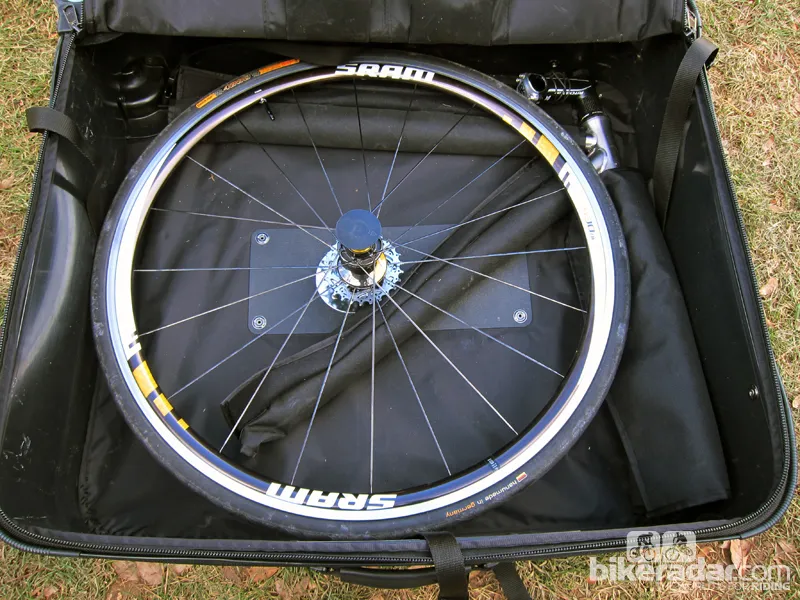
For best use of space, try layering the bike and its various parts
Ritchey include a generous amount of wraparound tube covers and other accessories. However, we'd recommend upgrading to more protective foam pipe insulation for the frame and fork, proper dummy axles (we built ours from old hubs and used the wheels' quick-release skewers to secure them) and plastic hub axle caps such as those used on new factory bikes. We also wedged in a number of rags, shoes and bottles, to separate things more. We even found room for Lezyne's fantastic CNC Travel Floor Drive pump and a pair of SKS Raceblade fenders.
Including a rather comprehensive collection of accessories, the total packed weight was still just 16kg (35lb). That's well under most airlines' maximum allowable weight for a single bag.
After two domestic trips and one international journey, we only had a slightly dinged rim sidewall to show for it – and that was only because airport security had repacked things in the bag. Another accessory we'd recommend is S&S Machine's security net, which allows security officials to remove the entire bundle in one, inspecting the contents easily without having to shift anything around.
Even though the packed case comes in under weight, it's worth noting that this doesn't guarantee you'll get through check-in without any additional fees. Many airlines don't care about size and weight at all – if they know it's a bike, they'll charge. However, some carriers such as United and Continental now specifically state that half-sized travel cases such as the Ritchey will count as a standard piece of baggage.
Regardless, the Ritchey is still technically oversized by about 2cm in width, so keep that in mind. We managed to check in each time without any charges, saving nearly US$1,000.
The world is for riding
The Ritchey Break-Away Road Ti/Carbon is far from cheap, at US$2,999.95 for the frame, fork, headset, case and associated accessories. However, that's not outrageous compared with other straight-gauge titanium bikes that don't offer the same travel benefits. Ritchey also offer the same functionality in steel for a substantially cheaper US$1,295.
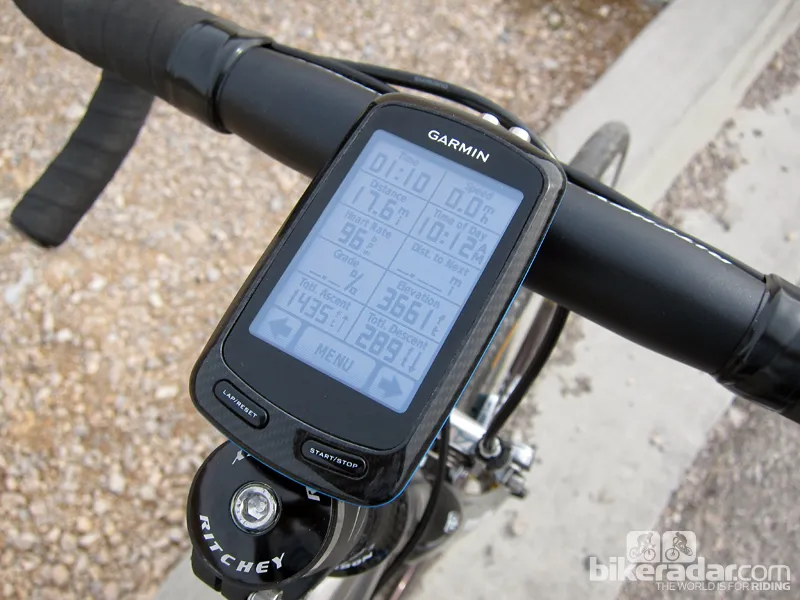
Garmin's Edge 800 computer is a perfect traveling companion for the Break-Away
Cyclists who travel for work a lot or often find themselves in appealing locales with no bike should consider budgeting for the Break-Away. It's not exactly spare change but you can't put a price on being able to ride a bike that fits you and performs well anywhere, any time.
Of all the rides we've done this season, it's the ones we wouldn't have been able to do without a travel-friendly bike that stand out. Those moments are invaluable.
